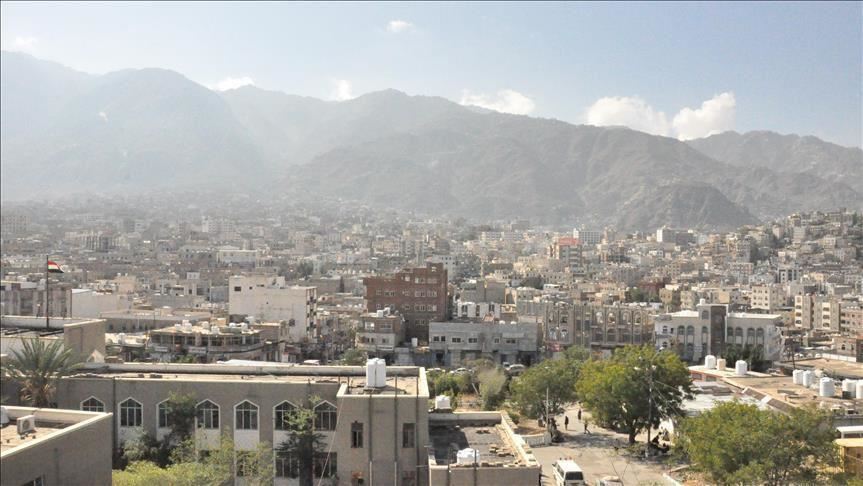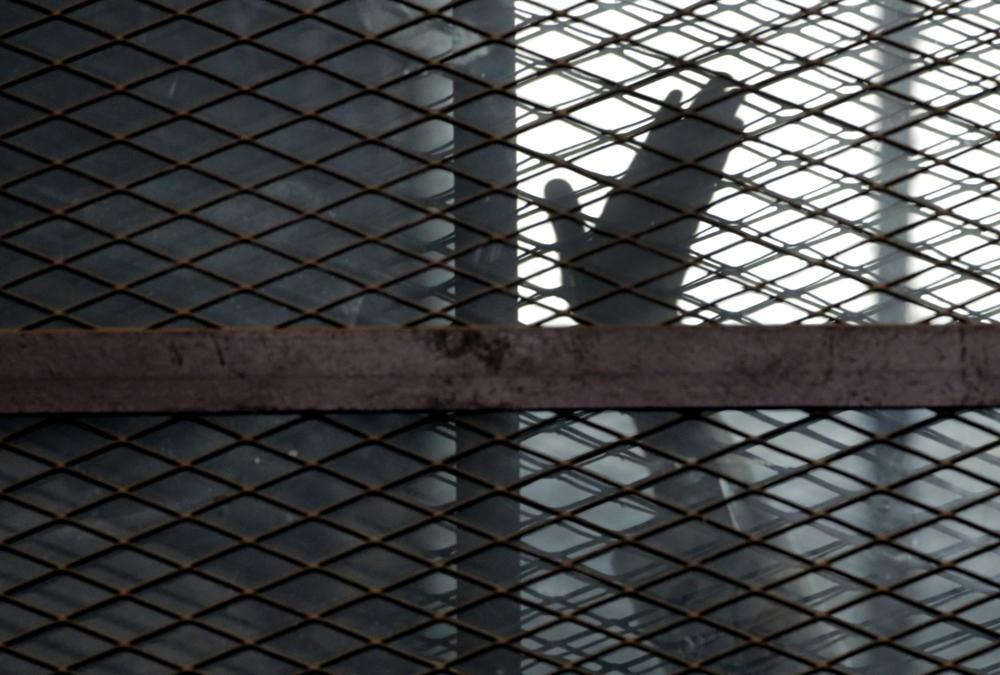When Zaki, a local who lives near Wadi al-Natroun prison, found inmates hiding in his greenhouse, they told him they had been forced to flee the prison by a group of armed men in civilian clothes who told them to blame their escape on Bedouins.
“The prisoners told me that the armed men forced them to leave, threatening to pour gasoline all over them and light them on fire if they didn’t follow orders,” says Zaki.
Some of the prisoners attempted to reason with the group of men, Zaki relayed, explaining that they had no money with which to go anywhere. The armed men responded by throwing LE10 notes at them, yelling at them to take what they want, and leave immediately.
“If anyone tries to stop you or get in your way, kill them,” the men reportedly said, with the added reassurance: “You have nothing to worry about. We’re not patrolling the streets anymore.”
It was this last line that convinced Zaki, as well as the terrified prisoners, that their liberators were in fact police officers, operating under direct orders. “If anyone asks you how you got out,” the prisoners were told, “blame it on the Bedouins.”
The events become stranger still when compared to reports of bulldozers tearing down prison walls, and a recent statement made by the Minister of Interior, in which he referred to the extensive damage done to the facilities that had been allegedly invaded by outsiders trying to free prisoners.
The opposition has been vocal about toppled President Hosni Mubarak’s security apparatus deliberately releasing prisoners to scare people, instill chaos and stop the revolution that eventually ousted him after 18 days of riots. However, details of the prison breaks are still sketchy at best, and rife with discrepancies. While many people are quick to repeat news reports of bulldozers knocking down walls, the majority of released prisoners continue to deny the use of such machinery in what they say was their forced escape.
“When we were released from our cells, we found that the prison was deserted–there weren’t any officials or officers in sight,” stated prominent Muslim Brotherhood member Essam al-Erian, who had been taken into custody a day before his release from the Wadi Natroun prison facility.
Al-Erian said he and his colleagues were not let out by any prison officials or armed strangers. “The other prisoners let us out,” he said. “The ones that were released before us. From our cell we could hear the noise outside, and we gathered what was happening.”
Al-Erian said he and his fellow inmates were woken up around 2AM by what he described as “loud banging sounds” and a thickening stench of teargas.
By noon it had become clear that the prisoners were out of their cells, and al-Erian and the inmates tried to get their attention; “yelling as loud as we could and pleading with them to help us get out.” The released prisoners succeeded in tearing through the cell door using “iron sticks and primitive tools–stuff that was lying around,” al-Erian explained.
“Definitely not bulldozers,” he said. “I didn’t see any such machinery at any point in time.”
Despite the fact that he escaped from a different location–the Wadi Natroun prison complex consists of two separate facilities 5 kilometers apart–al-Erian’s account echoes those of the prisoners Zaki found hiding in his greenhouse.
“There were no bulldozers or forklifts involved, and no damage was done,” Zaki said, repeating what prisoners told him, and what he has since heard from his relatives living in a village adjacent to the prison facility. They described the night of the escape, when several Jeeps were seen driving into the jail minutes before the prisoners were let out. The vehicles, Zaki’s relatives assured him, were not fired at, or blocked in any way.
“Unless you’re a familiar face, and with the proper authority, it would be impossible to be allowed to drive your car in through the main gate that late at night,” Zaki reasoned. His relatives told him that many of the released prisoners who had been given weapons immediately sold them or exchanged them for cellular phones, he said.
“They [the prisoners] were selling these machine guns that they had been given for LE50,” said Zaki. “I went to visit my relatives shortly after, and there were teenagers running around with serious weaponry.”
“I have visited that jail before,” Zaki explained, “and I can tell you from personal experience that it would not be possible for one, or even a few, bulldozers to free the prisoners, at least not in such a short span of time. It’s not like the prisoners were hiding directly behind that first, outermost wall.
“Whoever is responsible for this had to have an intimate knowledge of the prison system, and the layout of this particular facility,” Zaki said. “It’s a ridiculously well-guarded facility operating on an elaborate and archaic system that would not be easily navigated by an outsider.”
As it is, Zaki attests that the Wadi Natroun prison walls are still intact and standing–a claim confirmed by several photographs taken by his employer Sherif Foda, who drove past the facility on the morning of 31 January.“The first thing I noticed was piles of dark blue uniforms littering the road. Some had ‘prisoner’ stitched on them, others read ‘inmate’ or ‘resident’,” said Foda. “And then I drove past the prison’s main gate, and saw this,” he explained, showing Al-Masry Al-Youm a photograph of the prison’s gate—wide open and without a scratch.
Foda, 59, was on his way to check on a plot of farmland he owns, situated near the prison. He had been called by the groundskeeper the previous night and told that a small group of prisoners was found hiding out on his property, but immediately fled as soon as they were approached. Nonetheless, Foda armed himself before making the trip, although, as he puts it, “God only knows if having a gun will make the slightest bit of difference when you actually need it.”
A short distance from the prison, Foda came across an elderly man in a wheelchair, sitting in the middle of the road. Worried about being ambushed, Foda kept driving, only to later find out that the handicapped senior was in fact a released prisoner. According to Foda’s groundskeeper, the elderly man had been in prison for almost 30 years, and, when approached, had weakly complained, “I don’t know where I’m supposed to go. I have nobody.”
On his way back to Cairo a few hours later, Foda came across a corpse spread out by the side of the road, and, half a kilometer later, another one, covered in trash and lying alongside a blood-splattered lane divider. Increasingly worried, he continued driving, only stopping when he saw a younger man crouching over three corpses, weeping.
“I was worried, and didn’t want to stop at first,” said Foda. “But the man looked so honest, and genuinely suffering.” The young man approached the car, pointed back towards the bodies and explained to Foda, “one of those three men is my brother.”
Foda allowed the young man to use his phone, and then continued on his way. At no point, he recalled, did he see any demolished prison walls or any signs of forced entry as he drove past the length of the prison.
According to him, however, such details may be trivial. “What difference does it make if it was through the walls, or through these wide-open doors,” he asks, gesturing to another of his baffling photographs. “The result is the same. The prisoners were released.”



